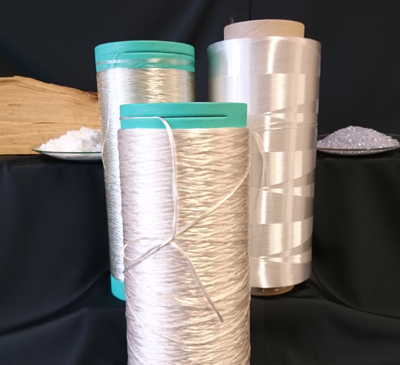Researchers develop new fiber composite material with cellulose reinforcement fibers
Denkendorf, Germany – The German Institutes for Textile and Fiber with the project partners CG TEC, Cordenka, ElringKlinger, Fiber Engineering and Technikum Laubholz are developing a new fiber composite material (CELLUN) with cellulose reinforcement fibers. The matrix of the material is a thermoplastic cellulose derivative that can be processed in industrial processing methods such as hot pressing or pultrusion. CELLUN made from renewable biopolymers enables the replacement of glass or carbon fibers in the manufacture of industrial molded parts.
Organosheets are increasingly being used within the fast-growing segment of fiber composite lightweight construction. Organosheets are pre-consolidated semi-finished panels with a matrix of thermoplastics and various reinforcing fibers in a wide variety of textile designs. The thermoplastic matrix allows processing of the organo sheets with industry-established “fast” processes such as hot pressing, thermoforming, injection molding with organo sheet inserts or pultrusion. The processes produce easily recyclable, highly functionalized components with reproducible quality.
The textile reinforcement of the organo sheets consists primarily of glass, carbon, basalt or aramid fibers. These fibers have high stiffness and tensile strength, but are energy intensive to manufacture and recycle, and can only be recycled in an increasingly degraded state.
In contrast, the CELLUN composite material developed at the DITF is a much more sustainable alternative. For the production of CELLUN, the reinforcement component made of non-fusible cellulose fibers and thermoplastic, derivatized cellulose fibers are combined as a matrix to form a hybrid roving. Regenerated fibers from Cordenka and the HighPerCell ® cellulose fibers developed at the DITF are used as cellulose reinforcement fibers.
CELLUN is now being further developed to industrial maturity as part of a joint project funded by the Federal Ministry for Economic Affairs and Climate Protection (BMWK). The tasks of the DITF in the CELLUN joint project are above all the production of suitable reinforcing fibers based on cellulose and the embedding of the fibers in the thermoplastic cellulose derivative matrix. The material is processed into technical hybrid rovings and hybrid textiles in the in-house technical department. Finally, molded parts can be produced using pultrusion and thermoforming processes or injection molding, which illustrate the technical application possibilities of the new material.
In the further course of the project, the focus is on the complete recycling of the CELLUN material after the End of Life (EOL). To this end, two different approaches are being explored. On the one hand, there is the possibility of thermally forming CELLUN molded parts without any loss of quality. A second possible way is to chemically separate the CELLUN material back into its individual components. These can then be used again 100% as new starting materials.
The innovative CELLUN materials will offer a real advantage in the market for technical semi-finished products as an environmentally friendly, resource-saving and cost-effective alternative to established composite materials in the lightweight construction and automotive sectors. By using renewable biopolymers, CELLUN will make a significant contribution to environmental and climate protection: On the one hand, conventional plastics based on crude oil can be substituted, on the other hand, CELLUN reinforcement and matrix fibers can be manufactured from natural raw materials with little energy input.

